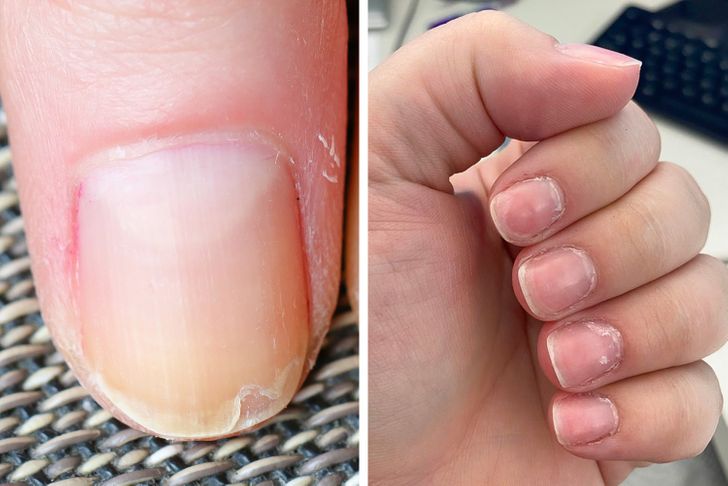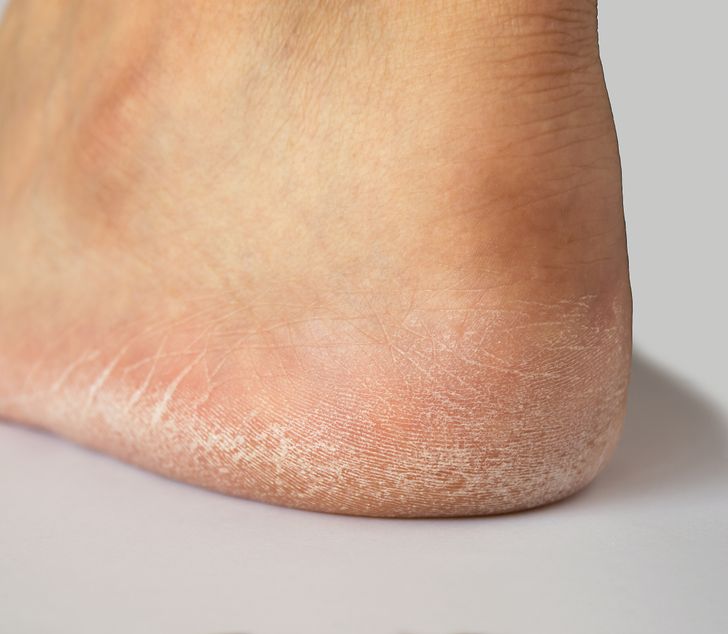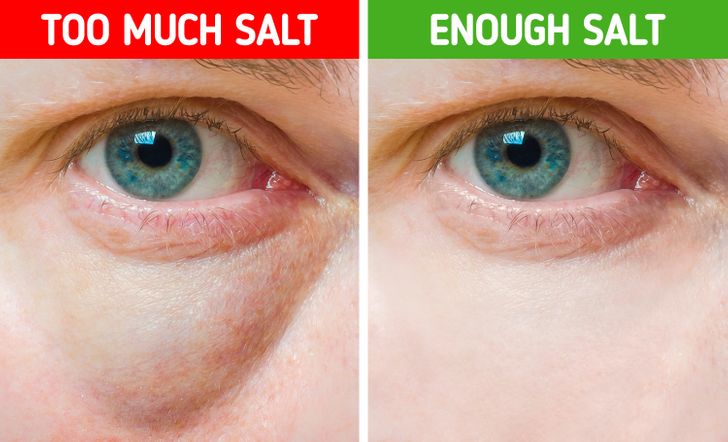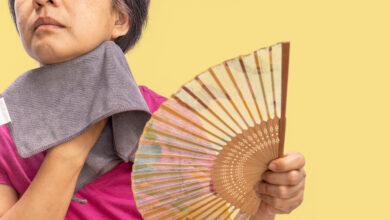
The most common reasons for peeling nails and cuticles are iron deficiency and dehydration. If iron deficiency isn’t treated in time, it can lead to anemia, which can also lead to multiple health issues, such as chest pain. Other reasons for your bad nails can be your underactive thyroid, lung disease, or even kidney disease. The best way to treat your nails at home is by eating an iron-rich diet and keeping your nails moisturized.
Now, if you start noticing white spots on your nails, there are 4 possible reasons: allergies, fungal infection, an injury, or mineral deficiency. You should pay closer attention to the last one since it will need to be treated with extra care. Zinc and calcium are the most common culprits for this deficiency, and getting a blood test done should be the first thing you do.
5. Cracked heels

Cracked heels can be caused by dry skin, cold weather, or if you stand for many hours every day. However, they can be indicators of more serious issues, such as eczema, hypothyroidism, and diabetes. You can treat your heels by soaking them in soapy water for 20 minutes and scrubbing them with a pumice stone. Then you will need to apply a heavy moisturizer that includes lactic acid, jojoba oil, or shea butter.
You will need to see a doctor if your home treatments aren’t improving your heels at all. There are many treatments your podiatrist can do or prescribe, such as a much stronger moisturizer. What you can do on a daily basis is check your heels, wash them thoroughly, and wear supportive shoes.
6. Redness around the nose, cheeks, and forehead

Rosacea is the #1 cause of redness around these areas, and it affects around 14 million people in the US alone. People over 30 and with fair skin are more likely to develop it since rosacea rarely affects children. Some of the most common signs are flushing, persistent redness, bumps and pimples, and visible blood vessels. Other less common signs include eye irritation, skin thickening, and swelling.
The way rosacea is usually treated is with topical and oral medicines that your doctor will prescribe to you. In more serious cases, doctors might use laser treatments in order to remove any visible blood vessels.
7. Puffy or even swollen eyes

If you don’t have an infection and aren’t allergic to anything and you still have a swollen eye, then the most common cause is obvious. Overconsumption of salt leads to more water being trapped in your body and your face, including the area under your eyes. You will need to cut down on the salt you consume and maybe increase your potassium intake. Some other causes can be Grave’s disease, a blocked tear duct, smoking, and not getting enough sleep.
Once you know the source of your problem, you will need to start treating it. Cold compresses, tea bags, and facial massages are some of the easiest things you can do by yourself. If, however, the swelling doesn’t go away no matter what you do, you will need to see a doctor.




